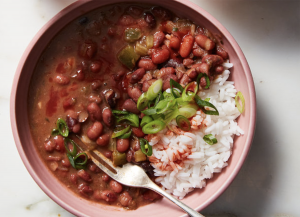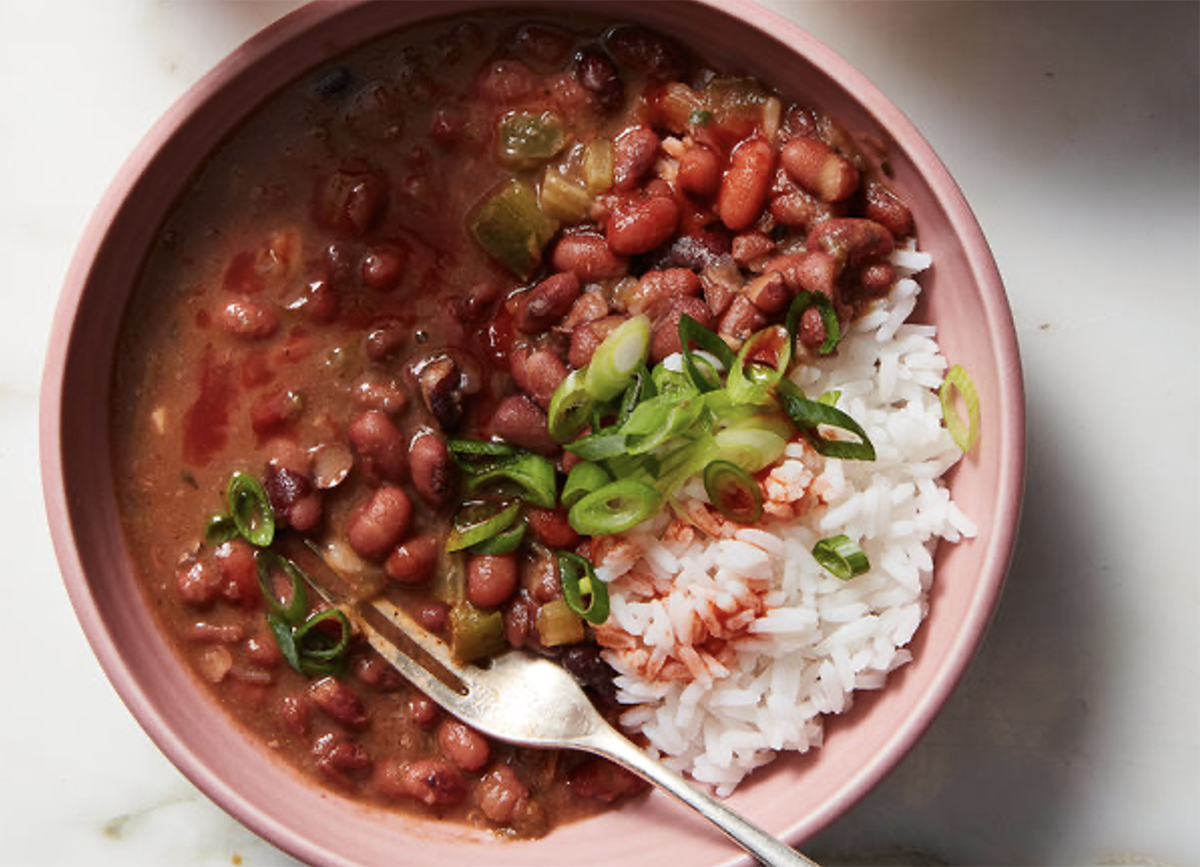Red Beans and Rice
– Anonymous
One of my favorite dishes from the Caribbean is Red Beans and Rice.
Research shows that beans and rice have been a staple pairing for thousands of years throughout African and Latino history. In Central America, beans and rice dishes are called matrimonio, meaning the marriage. Beans and rice have also been referred to as “peas and rice” in the English-speaking Caribbean and “rice and peas” in Jamaica.

In dishes throughout the Caribbean and South America, beans and rice are often served separately on the plate. In Africa and in some regional dishes, the beans and rice are usually cooked together in the same pot. Try it both ways to add variety to your meals. I grew up eating red beans and rice both ways either cooked separately or together.
As a child, I was fascinated when my dad cooked his infamous red bean and rice dish (separately cooked). He’d said the key to an excellent bean dish is in the pre-soaking. Soaking helps break down the compounds in beans that cause flatulence (gas) and helps speed up the cooking time while letting the beans cook more evenly.
Before pre-soaking, he’d place the red dry beans in a colander, rinse and remove any stones or debris, drain, and then place beans in a pot. He’d cover the beans with water and soak them for 6 to 8 hours (overnight or all day). When ready to cook, he’d drain and rinse the beans and place them on the heat to cook.
If he was in a hurry, he’d use a quick soak by placing the beans in a pot and cover with water and bring to a boil over high heat. He’d cook them for 1 to 3 minutes, then remove the pot from the heat. Cover with a lid and let beans soak for one hour. Drain and rinse beans and then proceed on heat for cooking.
Once the beans were cooked (he’d test by pressing a bean between his fingertips, they should be soft but firm), then he’d separate the beans into two separate pots. One pot would get back onto the heat with all spices added: salt, pepper, spring onions, chili, lemon juice, clove, garlic then allow to boil. Then the beans would be smashed while cooking until reaching the right consistency. If it’s too liquid still, he’d add a bit of flower to thicken it up. Then he’d add the other cooked beans and some fresh herb. He’d remove the pot from heat and let it rest and serve over a bed of white rice. Sometimes, he’d add sausages onto the beans to enhance the flavours but most of time my dad would serve the dish as a vegetarian dish.
Research shows that different regions identify with the different pairing of beans and rice.
- In Brazil, black beans are most popular in beans-and-rice combinations, as well as in the Caribbean’s famous black bean soup.
- Kidney beans, mung beans, and black-eyed peas (which are native to Africa) are most enjoyed on the African continent. Black-eyed peas were carried over as a staple in African American cuisine and are popular even today.
- Red kidney beans are popular in Central America, and are very popular in Louisiana and Caribbean cuisines, often served with coconut milk and rice.
- Pigeon peas and other field peas are favourites of the Caribbean.
- Pinto and lima beans have their origins in Central and South America. They were used originally by the Aztecs and today are enjoyed in African heritage cuisine.
- Pinto beans are also the everyday bean of Mexico, used for refried beans and commonly served with rice.
Beans and rice are an affordable and healthy combination, and with over 13,000 varieties of beans to try, you’ll always have something new and tasty to uncover.

